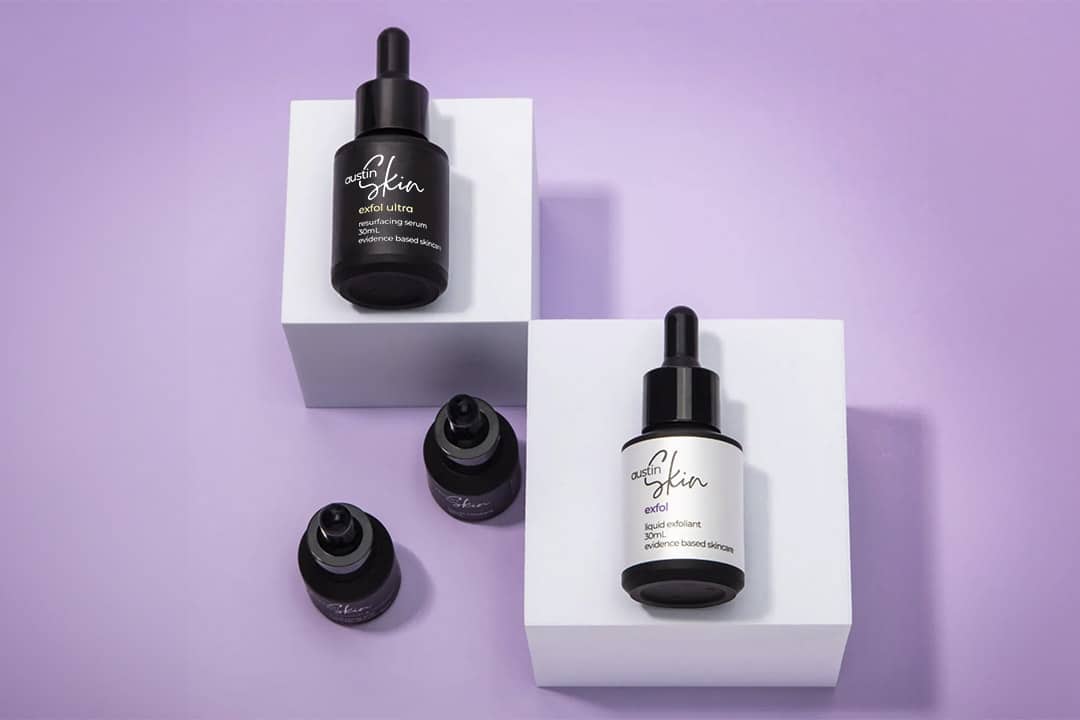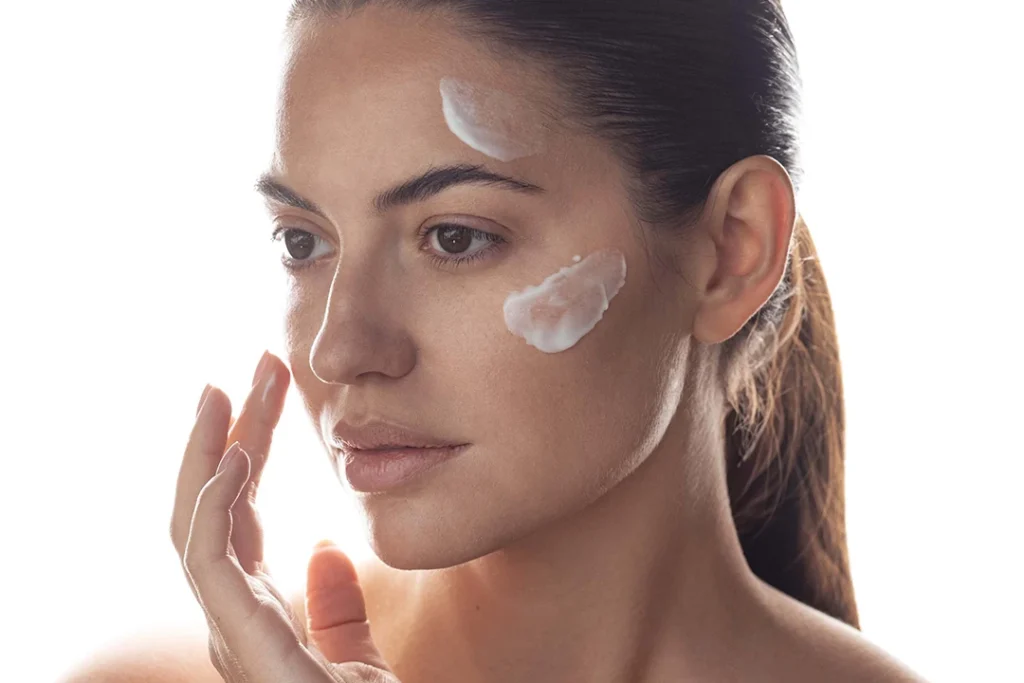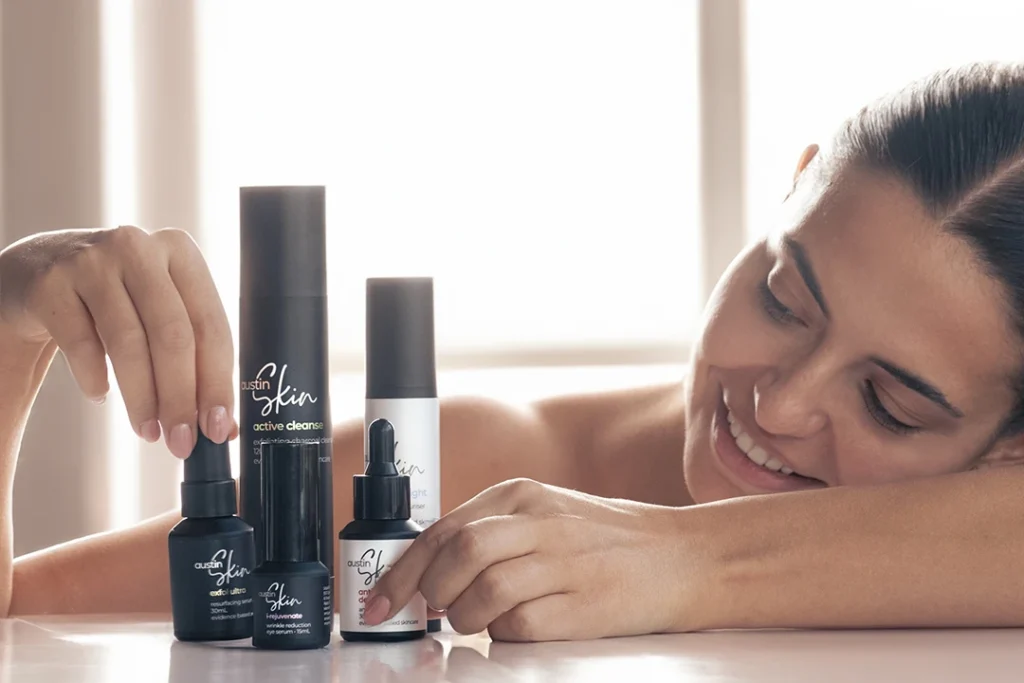Skin Exfoliation for Beginners
Exfoliating products are broken down into two categories:
Physical exfoliants scrub away dead skin and debris using small particles (facial scrub) or a rough texture (facial brush or washcloth)
Liquid (chemical) exfoliants rely on acids and enzymes in their formulations to dissolve and loosen surface skin cells, and deeper cells as well.
Interest in liquid skin exfoliants has never been higher. Google reports a 110% increase in searches for this term. What’s all the fuss about? Liquid exfoliants work and they work better than their physical counterparts. That’s why the Austin Skin product line includes two outstanding choices: Exfol and Exfol Ultra resurfacing serums.
The Key Difference: Glycolic Acid Levels
One of the star ingredients in both these products is glycolic acid. Key differences in its concentration allow people with a variety of skin types to enjoy its benefits (more about those benefits in a moment).
Austin Skin Exfol Resurfacing Serum
This product contains 10% glycolic acid, which is a lower concentration than Exfol Ultra. This makes it a good option for people with sensitive skin or those who are new to chemical exfoliation.
Austin Skin Exfol Ultra Resurfacing Serum
This product contains 15% glycolic acid. The higher level of acid increases the product’s exfoliating strength but is more likely to lead to dryness and irritation. In general, it is appropriate for people with normal to oily skin.
“With new patients, we do a patch test of both products on a small area of skin,” reports Dr Austin. “This allows us to monitor how an individual’s skin reacts to each before using it on the face.”
Why Glycolic Acid is a Superstar in Skincare
Glycolic acid is prized for a variety of reasons beyond its ability to remove dead skin cells and oils, without scrubbing:
Anti-Ageing Capabilities – Glycolic acid helps reduce hyperpigmentation while increasing collagen and hyaluronic acid production. This, in turn, gives skin more youthful elasticity and structure.
Proven Humectant – Glycolic acid increases the synthesis of glycosaminoglycans, molecules that draw moisture to the skin and holds it.
Possible Anti-Bacterial – At certain concentrations, scientists believe glycolic acid may be able to inhibit the growth of bacteria on the skin.
An Important Fact about Glycolic Acid
Glycolic acid is one of a group of alpha hydroxy acids. Of all AHAs, glycolic acid has the smallest molecular structure. This enhances its ability to penetrate more deeply into the skin and exfoliate below the surface.
Glycolic acid, like other AHAs, is a naturally occurring substance that is found in food:
- Glycolic acid – sugarcane, beetroot
- Citric acid – citrus fruits
- Malic acid – apples
- Lactic acid – milk
Both cosmetic and pharmaceutical companies, harness the power of glycolic acid to treat skin conditions and improve skin texture and appearance. It should be noted, however, the glycolic acid used by many cosmetic companies is not naturally derived. “Laboratory-created glycolic acid does not deliver the same benefits as its natural counterpart,” says Dr Austin. “Chemically derived glycolic also causes problems that naturally sourced does not.”
The Million Dollar Question: Is Exfol Ultra Better than Exfol?
Ultimately, the best way to decide which product is right for you is to consult with Austin Clinic or the Sanctuary. They can help you assess your skin type and sensitivity and recommend the best product for your individual needs.




